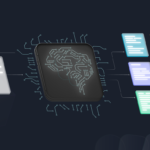Know about Infrastructure as a service
In today’s fast-paced digital world, businesses are increasingly turning to Infrastructure as a Service (IaaS) to meet their computing needs. IaaS offers a flexible and scalable solution that allows organizations to leverage computing resources without the burden of managing physical infrastructure. In this blog post, we will explore what IaaS is, its key features, benefits, and how it empowers businesses to focus on their core objectives.
Defining Infrastructure as a Service (IaaS): Infrastructure as a Service (IaaS) is a cloud computing model that provides virtualized computing resources over the internet. It delivers essential infrastructure components such as virtual machines, storage, networks, and operating systems as a service. With IaaS, businesses can access and manage these resources on-demand, paying only for what they use, without the need to invest in physical hardware or data centers.
Key Features of IaaS: Let’s explore the key features that make IaaS a valuable solution for businesses:
- Virtualization: IaaS relies on virtualization technology to create virtual instances of servers, storage, and other infrastructure components. This enables multiple users to share the same physical resources while maintaining isolation and security. Virtualization allows for efficient resource utilization and the ability to quickly scale up or down as per the business requirements.
- Scalability: One of the primary benefits of IaaS is its scalability. Businesses can easily scale their computing resources up or down based on demand. Whether it’s handling sudden traffic spikes or accommodating growth, IaaS provides the flexibility to allocate resources on-demand, ensuring optimal performance and cost efficiency.
- Self-Service Provisioning: IaaS empowers businesses with self-service capabilities, allowing them to provision and manage resources independently. Through a web-based interface or API, users can easily create, configure, and deploy virtual machines, storage, and networks. This self-service provisioning reduces the reliance on IT teams and enables faster development and deployment cycles.
- Cost Efficiency: With IaaS, businesses can reduce upfront infrastructure costs and operational expenses. Instead of investing in physical hardware and data centers, organizations pay for the resources they consume on a pay-as-you-go basis. This eliminates the need for overprovisioning and allows for optimal resource allocation, resulting in cost savings and improved financial efficiency.
- Security and Compliance: IaaS providers prioritize security measures to protect user data. They implement robust security controls, encryption, access management, and network security protocols. Additionally, they adhere to industry-standard compliance regulations, such as HIPAA or GDPR, ensuring data privacy and regulatory compliance for businesses in sensitive industries.
- Disaster Recovery and Business Continuity: IaaS offers built-in disaster recovery and business continuity capabilities. Providers typically replicate data across multiple geographically redundant data centers, ensuring data redundancy and availability in the event of a failure or disaster. This helps businesses maintain operational continuity and minimize downtime, safeguarding critical data and applications.
Benefits of IaaS for Businesses: IaaS offers several benefits that empower businesses to thrive in the digital era:
- Focus on Core Competencies: By leveraging IaaS, organizations can offload the burden of managing infrastructure and focus on their core competencies and strategic initiatives. IT teams can concentrate on developing innovative applications, improving user experiences, and driving business growth instead of spending time on infrastructure maintenance.
- Agility and Scalability: IaaS enables businesses to quickly respond to changing market demands. With the ability to scale resources on-demand, organizations can accommodate growth, handle spikes in traffic, and adapt to evolving business needs without upfront investments or delays. This agility provides a competitive edge in dynamic market environments.
- Reduced IT Complexity: IaaS simplifies IT infrastructure management by providing pre-configured virtualized resources. Organizations can rapidly deploy virtual machines, configure networks, and scale storage without the complexities of physical hardware. This streamlined approach enhances operational efficiency and reduces the time-to-market for new applications and services.
- Global Reach and Accessibility: IaaS providers have data centers distributed globally, allowing businesses to reach customers and markets across different regions. With reliable and low-latency connectivity, businesses can ensure seamless access to their applications and data from anywhere in the world, empowering remote workforces and enabling global collaboration.


































